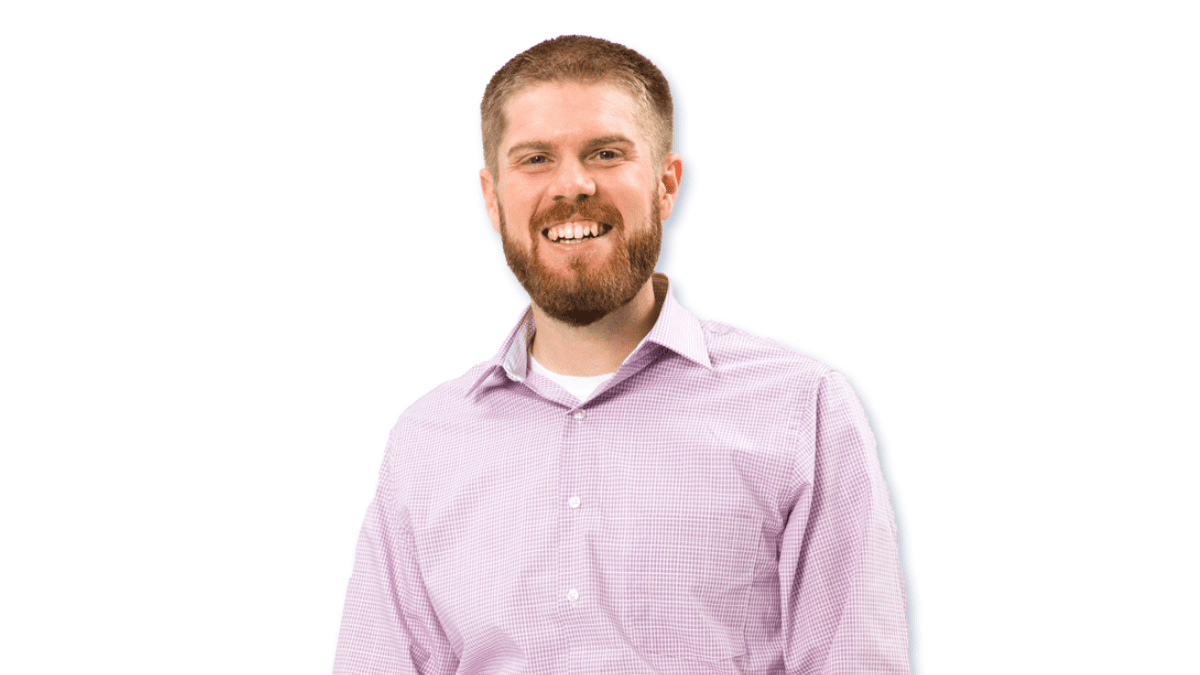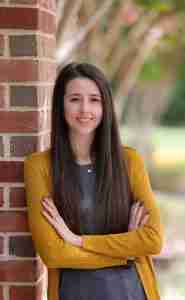
5 Questions with Matthew Decker, Project Architect at CRB Group
“5 Questions With…” is a recurring BioBuzz series where we reach out to interesting people to share a little about themselves, their work, and maybe something completely unrelated. This week we welcome Matthew Decker, Project Architect at CRB Group, a leading provider of sustainable engineering, architecture, construction and consulting solutions to the global life sciences and advanced technology industries.
Matt is a licensed architect in Pennsylvania. He pays close attention to detail while gathering information in a staged approach, which leads the team to design a safe and successful laboratory. His role, above all else, is to ensure the safety of those who occupy or use a building for scientific discovery. Matt’s foundation in safety requires knowledge of specialized code compliance and fluency in regulatory and industry guidelines specific to laboratories.
Through continually refining planning metrics and critical thinking, he not only helps drive new building projects but also develops solutions that accommodate the restrictions of renovation projects. Matt’s laboratory experience allows him to interact with the additional layers of complexity associated with science and technology facilities, which include laboratories for cell and gene therapy clinical testing, quality testing in support of pharmaceutical production activities, Current Good Manufacturing Practices, material testing, and biosafety laboratories for containment and study of infectious diseases as well as spaces for vivarium holding, procedures, imaging, and other support.
1) Please introduce yourself to our audience by looking back at your education, training, and career.
I am an architect focused on laboratory design (lab planning) currently executing projects throughout the east coast and serving in a management role as a co-group lead for our Science and Technology architecture and interior design team in our Plymouth Meeting office. My career in architecture started during my time as an engineering student at The Pennsylvania State University. I pursued a Bachelor’s in Architectural Engineering (BAE) and had the opportunity to intern with engineers one summer and with architects the following year. These internship experiences edified my path towards becoming an architect because I realized that although I could complete the tasks associated with engineering, I was more passionate about architecture. After completing my BAE with a focus in structural engineering, I began the grueling process of finding my first position with an architectural firm. I say grueling because I graduated during “The Great Recession.”
Honestly, I would have taken any position offered to me at the time but as luck would have it, I found the perfect career path instead! I joined a small firm and was able to quickly start participating in many aspects of practicing architecture. My foundational training was on the proving grounds of projects with the major pharma companies including the likes of Merck, BMS, and J&J. The example and expertise of those involved, both on the design and client side, in project execution for those preeminent enterprises provided me with the skillset to work through the complex projects I’m working on today.
My entire career as an architect has been focused on laboratories and the life sciences sector which I find truly engaging and deeply rewarding. My career has included countless renovation projects, additions, new construction, and master planning. I enjoy working on a range of projects simultaneously to engage teams during different aspects of the project life cycle. I thrive on connecting with teams to work collaboratively on solving design problems and continue to seek opportunities for growth both in project type and my role within our CRB organization.
2) Four years with a company is no small feat! What are some of the factors that drew you to CRB and continue to keep you on the team?
The CRB team had a tall task in recruiting me to join their Science and Technology team. I was happy with my workload, project type, and position within my previous organization. I was not searching for a new opportunity. I was drawn to the team culture, office energy, opportunity for working on a cross-discipline team, and design excellence. During my interview the connected nature of the architects and engineers was evident. The hours-long interview with multiple rounds of people seemed to fly by due to the ease of conversation. The chatter within the open office was lively and scooter traffic contributed to the refreshing vibe. Finally, the level of science and technology design examples shared was inspirational and captivating. I left feeling this was the best next step in my career.
Upon joining the team my perceptions during the interview were surpassed. The team was not only energetic but also more than welcoming and I instantly felt like an integral part of the team. All of the aspects that drew me to CRB originally still ring true but I have also discovered additional aspects which cultivate my decision to stay. Those include access to leadership, investment in people, career advancement, fascinating projects, and the company’s growth trajectory.
Even though the organization is orders of magnitude larger than my previous experience I still have access to leadership, and they are receptive to my contributions. CRB holds technical excellence as a core value and backs that up with investment in its personnel’s career growth through external events, internal mentorship program, and clear career paths. I can see a path for exponential growth within our organization which invigorates my approach to architecture.
CRB continues to successfully execute some of the most technically challenging and relevant projects in the country. We have teams of people that were integral to providing vaccinations in this pandemic and others working on cutting-edge cell and gene therapy for rare diseases. CRB unceasingly makes strategic investments, transparently promotes these initiatives, and doesn’t accept success as a finish line but rather a starting point.
3) What are some things you and the team are working on in the near future that has you excited for CRB’s growth?
We have projects on the horizon across the Philly life science environment from Center City through the surrounding suburbs, including adaptive reuse projects and purpose-built spaces. We have projects with long standing partners, developer organizations, and start up companies. We have local team members working on significant projects in California and Texas while others are engaged up and down the east coast. One of the project types I am most excited about is our growth in the food and beverage sector.
In addition to projects, our team members are working on countless internal initiatives from our internship experience to implementing sustainability practices in our local office. We have numerous team members pursuing architectural and interior design licensing. Our team actively participates in the wider industry through presentations, papers, and surveys. The growth of our team is multi-faceted but the thing that excites me most is our continued onboarding of new members, each one brings unique energy, expertise, and diversity to enrich the wider group.
4) Having been an Architectural Engineer for 13+ years, you have learned a lot through “doing”. What are some insights you have picked up along the way that you wish your younger self would’ve known?
There are three mantras I would share with my younger self: ask more questions, practice drawing without a computer, and elevate design.
As an entry-level designer, I was simultaneously learning the practice of architecture and the complexity of the life science sector but also surrounded by experts in the field. Today I realize the extent of what I don’t know and approach each project with open ears to learn from team members while solving problems towards collaborative project solutions. People are willing to share their experiences and are often passionate about the industry; it’s easy to connect and learn through some simple questions.
The art of drawing as a part of the architectural practice cannot be overstated. This foundational skill allows for exploration of ideas, communication with team members, and documents progression. Allowing a tool to limit creativity is short-sighted, and learning to balance the recursive progression between paper and the screen allows for deeper examination of solutions. You may not always have a laptop with the latest 3D software with you, but a pen and paper are easy to come by and very approachable by everyone.
The final insight I would share is the potential for design to inspire all types of space. My early view of architecture was very focused on functional aspects of a space but did not take the time to evaluate the use of materials or organization of space based on occupant experience. Technical spaces are occupied by people for similar durations to office environments and should be evaluated for their impacts on people living in them. A strong understanding of the technical requirements allows for deeper dives into solutions that push the envelope of a space which engage and empower those using it.
5) You are on a stranded island – who is your dream team of three celebrities that will help you get back to civilization?
Interesting question. I feel like the big business players (Bezos, Musk, or Zuckerberg) wouldn’t really be lost for more than a day (though I don’t know how they might get along together in a desperate situation) but that takes the fun out of the spirit of this question. Skill, food, and comedy appeal to me in this situation so I think I would go with Bear Grylls, Joanna Gaines, and Kevin Hart.
I spent plenty of time in the woods as a Boy Scout when I was younger, but Bear Grylls is an expert in survival who could guide the rest of us through sustaining and return to civilization. Building a shelter, gathering water, and gathering food would all be commonplace for him, and his coaching nature could guide the rest of us castaways. I envision him as the key expert but there are other important supporting roles. If Grylls would help us gather food I think Joanna would be able to lift our spirits with some creative food and leadership to keep us on track. Finally, Kevin Hart would be able to breathe some levity into the situation. I imagine he would need some time after the initial shock of being marooned but he could likely generate some great content with all the free time. In challenging scenarios it’s important to still laugh and have fun!
- About the Author
- Latest Posts
BioBuzz is a community led, experience focused, biotech and life sciences media and events company. BioBuzz highlights regional breaking news, industry professionals, jobs, events, and resources for business and career growth. Their weekly newsletter is subscribed to by thousands in the BioHealth Capital Region and Greater Philadelphia as the go-to for industry updates.







